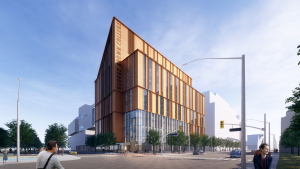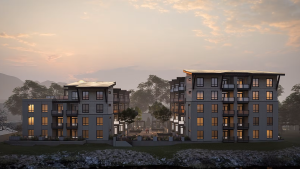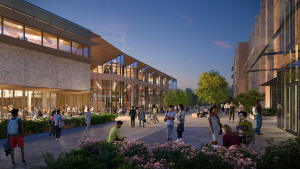In the hands of today’s top practitioners, deep energy retrofit projects require precisely defined strategies, with full documentation of proposed goals, cost expectations and technical options and detailed analysis of savings opportunities.
In other words, suggests Kit Milnes, vice-president of sustainability and resilience at KingSett Capital, it’s a business decision, and absolutely nothing is left to guesswork.
Milnes and Dan Stranges, principal at Continual Energy Inc., served as panellists recently as the Canada Green Building Council (CAGBC) hosted a webinar to showcase the retrofit of KingSett’s Scotia Plaza/100 Yonge Street building in downtown Toronto. The project was named winner of the 2023 CAGBC Award for Deep Carbon Retrofit.
“First and foremost, we didn’t just happen to fall into an opportunity to decarbonize 100 Yonge, we had established an overarching strategy in order to be able to scope and identify opportunities as they came up,” said Milnes.
“I really suggest that if you haven’t set this up, or gone through this type of exercise with your organization, this is the first step before planning on executing any projects.”
100 Yonge is an 18-floor, 250,000-square-foot class A office building that was constructed in 1989 and renovated in 2008. KingSett knew upgrades to mechanical were needed with the building’s boilers and chillers approaching end of life.
The first step was to calculate where the building fit as part of the owner’s three-tiered decarbonization strategy. Within that strategy, it’s imperative that the asset type must be able to support the capital cost of decarbonization; the local electrical grid must have a small carbon footprint; and the infrastructure must be at or near end of life.
“Understand what state you’re going to put in the ground, how you’re going to define decarbonization, and what you’re going to be focused on, and then how you’re going to identify the opportunities,” said Milnes. “This is what gave us support and buy-in from our senior leadership and our investors, for them to have the confidence to say, ‘you guys can go ahead and do this because we understand how you’re approaching this and why.’”
High-quality real-time data was used to develop the decarbonization strategy. It was decided to replace the existing heating plant with air source heat pumps, completely redesigning the HVAC system; upgrade air handlers with heat recovery, new coils and humidification controls; and upgrade water risers and install a new electrical feed to relocate the cooling plant to the penthouse.
KingSett determined that merely replacing the outdated systems would cost around $2.9 million while undertaking the deep retrofit would have a price tag of about $4 million. The modelling exercise looked ahead 20 years.
“As we modelled it out, we’re looking at a 28-per-cent cost premium, we’re looking at eliminating 500 tonnes of carbon per year, which is equivalent to about 76 per cent of the carbon emissions, and we were looking at a payback of about 10 to 13 years,” explained Milnes. “And we’re talking about systems and equipment that lasts for 20-plus years.
“In this day and age, that is an acceptable payback period for what we’re trying to achieve.”
Stranges described the technical transformation of the building. Continual Energy is a full-service design-build engineering firm who was involved in the project from the early stages of the design.
“We go right from A to Z and it really helps to have control over all those parts, to have all that control over the project in order to implement especially challenging projects like this,” said Stranges.
The firm even created devices in-house to customize the refrigeration and heat recovery systems. The installation of an air source heat pump capable of operating at temperatures as low as minus 30 C is considered a pioneering achievement for Toronto’s cold climate.
One year post-decarbonization, preliminary results are in. The system still has a way to go before it is optimized, Milnes said, but already energy consumption has dropped by 30 per cent in a 12-month comparison, with a total of 370 tonnes of carbon cut – not yet the 500 tonnes targeted, but that total is within reach.
On the financial side, KingSett was expecting to recover the capital premium of $1.1 million in about eight or nine years. It’s coming out to about nine-and-a-half to 10 years at this point.
“This fits perfectly for what we’re looking for,” he said.
Follow the author on Twitter @DonWall_DCN.











Recent Comments